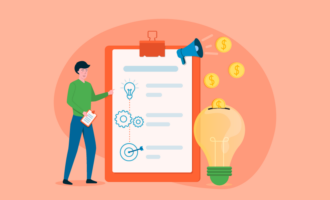No business stays the same forever. Yours will undergo a continual evolution, transforming from an idea to a full-fledged company. In the process, your startup will go through various life-cycle stages. Each is critical to your ongoing success, and each brings unique opportunities and challenges that require you to make critical decisions.
You should prepare your company for the following four life-cycle stages:
You should prepare your company for the following four life cycle stages:
- Seed life cycle: Development
- Startup life cycle: Launch
- Expansion life cycle: Grow
- Exit life cycle: Pivot
Seed life cycle: Development
In the development stage, you need to nurture your idea to grow it into a full-fledged small business. Test your business idea for viability, sustainability, and demand. Research and feedback will help determine if this life cycle can — or should — continue.
Other challenges you’ll face in this stage include obtaining resources, such as time and money, to pursue the business. To address this challenge, identify available talent and leadership who can help guide your business idea to the next life-cycle stage. Often, the money will come from bootstrapping or from a seed investor who understands companies at this stage.
Startup life cycle: Launch
Your business exists because all indicators during the seed life cycle pointed to its value and viability. Now it’s time to turn the idea into a legitimate business that has a specific product or service to sell.
As part of this life cycle, business owners need to manage a strategy to gain awareness, new customers, and revenue for the business. Begin to establish healthy product lines, distribution channels, and a business structure at this stage. While leveraging existing research, focus on the tactics that can help you satisfy the expectations of your target customers and become profitable.
The main challenge here is to not burn through your funding. This growth phase requires you to keep a lean budget and learn how to do more with fewer resources. Managing your cash flow effectively will help your investors feel confident about getting the return they expect.
Expansion life cycle: Grow
If you’ve managed to get through the first two cycles, you’re not running a new business anymore. You’re now adding customers, generating consistent income, and covering operating expenses. Your business is entering an expansion stage and may now be seeing the impact of the competition or changing market conditions and customer preferences.
This stage is a good time to plan how you’ll expand into new market segments and earn larger audiences. This requires keeping a close watch on your current financial, management, and operational processes for ways to add efficiency. You may need additional talent to help you scale the business in this growth stage.
Many factors will challenge your efforts to gain greater market share, including changing audience interests, economic cycles, and regulatory measures. Here again, thoughtful research can help you expand into new products and services or geographic areas.
Beyond significant preparation and research, this life cycle requires financial support from sources of money such as joint ventures, licensing, or new investors.
Exit life cycle: Pivot
It’s important to have an exit strategy, whether you intend to sell your business or merge with another company. Although some well-known brands have been going strong for decades — some for a century or more — most businesses going on forever. At the very least, you may want to attempt a pivot. This could involve making wholesale changes to your product offering to gain a bigger market.
If you think you’ve reached the final stage of the business as you originally envisioned it, you can merge with another company or put the business up for sale. No matter what you choose to do, the exit life-cycle stage involves research, a realistic company valuation, and a transition plan to address how you’ll exit.
A proper valuation of the business includes assessing business operations, management, and competitive barriers to prove the company’s worth to potential buyers. You’ll also need to create a legal buy-sell agreement. The transition plan should address how you’ll take care of the employees and other assets you’ve nurtured throughout the business life cycle.
Unique aspects of business life-cycle stages
Each of these business life-cycle stages may not be straightforward or take place sequentially. Some go through the stages quickly with the sole intent to build the business and sell it to the highest bidder. This often happens with tech founders who hope their startup catches the eye and pocketbook of a large tech firm. Other companies focus on slower business development, opting not to expand as much or as quickly.
The timing of life-cycle stages may be less relevant than a company’s ability to adapt to changes that signal the need to move to the next level. Knowing when to make these moves often determines whether a business is a success or failure.
You’ll also need to pay attention to external trends and factors in order to overcome ever-changing challenges and take advantage of opportunities. Conduct regular research and assessments, make the most of feedback mechanisms, update business plans and strategic roadmaps, and seek advice from business advisors.






















































































Send Comment:
1 Comments:
More than a year ago
Good afternoon Sir,
My name is Darlingtonia Litondo from African in a country called Zambia.Age of about 21,born in a family of two,my elder brother and I.
I want to have this opportunity to talk to you about my business plans that I have been having ever since I was 17 of age.
Business plan 1.
»Opening up a restaurant,more like Hungry Lion,but it shall be called"The Laughing Hyena".The meaning behind this name is to drive the hunger of people in the emotion as they're eating,making entertainments to them as they're eating they should enjoy the food,I got it from Hyenas themselves, when you look at these animals called hyenas they don't eat quietly but so noise and loud.It is the one am applying here,there should be music,and some performances to be done.
Even the cooking of food is much way different from other restaurants.I will explain more you reply to this comment I have just send to you.
I have read this Advice, it has helped me not to give up on dreams am having in but am having the problem of NO resources for my business plans.